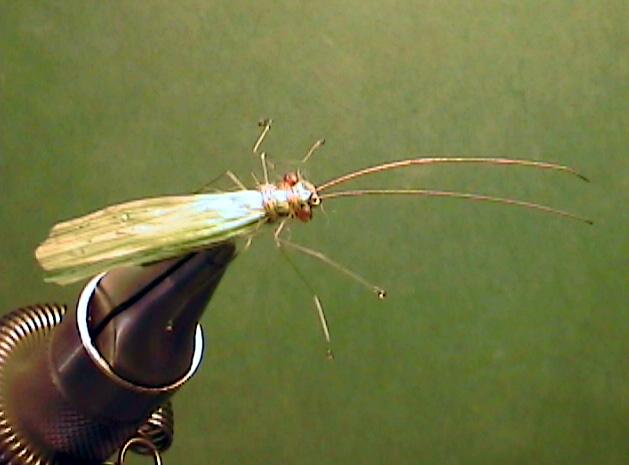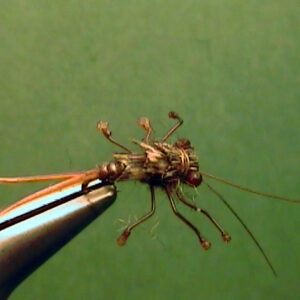Hook Size: 16
The Perfect Fly Little Green Stonefly adult is the fully grown stage of life of the Stonefly. It emerges from the nymph on the banks of the stream on rocks that protrude out of the water. The females return to the water late in the day to deposit their eggs and that is when trout dine on the adults. Fish the fly in the early afternoons until late in the day near the same water they emerged from. Floatant should be used on the dry fly.
The “Little Green Stonefly” adults (“Chloroperlidae family
species”) are very similar to the “Little Yellow” stoneflies. In fact, contrary to
what the name indicates, the “Little Green Stoneflies” are sometimes yellow.
Many are chartreuse. Most of them have green wings and green bodies though.
The Little Green Stoneflies are small to medium sized stoneflies that emerge in
the spring and summer months. Although they are never any super hatches, the
long emergence period of anywhere from thirty to sixty days, makes the
members of this family important to anglers.
One thing about the Little Greens that’s easily recognized is that all of them
have short tails. That one thing doesn’t identify them from some other family
members but it culls a great many.
Like most stoneflies, cold mountain streams provide an excellent habitat for the
Little Green Stoneflies. These insects must have highly oxygenated water to
survive. You won’t find them in slow moving streams.
.
The haploperla brevis, a LIttle Green Stonefly, is often called a
“Little Yellow Stonefly”, Yellow Sally, and sometimes, the “Wee Yellow” Stonefly”.
I am mentioning it separately because it’s often confused with the Little Yellows.
It’s a small yellow-green winged fly with a green body.
The Little Green Stonefly nymph is a clinger nymph that lives just under one
year. Like all stoneflies the nymphs don’t hatch in the water. They crawl out on
the banks, rocks and boulders to emerge into adults.
They don’t seem to hatch in a highly consistent manner, so it’s not so easy to
known as to when you should expect to encounter them on many trout streams.
Our Perfect Fly hatch charts pin the hatch times down as close as possible but
you really just have to keep an eye out for them to know for sure. One thing for
certain is that you don’t want to discover a hatch or egg laying activity without
having imitations of them. You should be prepared.

